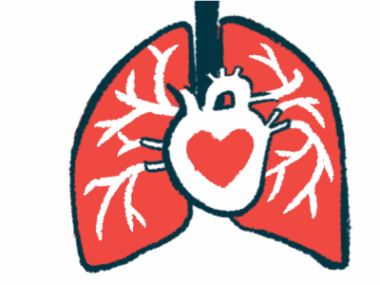De Novo Cardiac Sarcoidosis Linked to Worse Heart Disease
De novo cardiac sarcoidosis patients had more severe cardiomyopathy, more ventricular arrhythmias
Written by |

Patients with sarcoidosis of the heart, called cardiac sarcoidosis, with no other organ involved have more advanced symptoms at their first doctor visit than those with prior involvement of organs other than the heart, a study found.
With time, they also develop a type of irregular heartbeat called ventricular arrhythmia and are more likely to undergo certain types of heart surgery.
Earlier recognition of cardiac sarcoidosis may allow for timely treatment, “highlighting the need for ongoing cardiac surveillance in sarcoidosis,” the researchers wrote.
The study, “Cardiac sarcoidosis outcome differences: A comparison of patients with de novo cardiac versus known extracardiac sarcoidosis at presentation,” was published in Respiratory Medicine.
Sarcoidosis is first characterized by inflammation that leads to tiny immune cell clusters, called granulomas, forming that can build up in any organ in the body and interfere with its function.
When granulomas build up in the heart, they can make it beat irregularly and pump blood less efficiently. Cardiac sarcoidosis is linked to more arrhythmias (irregular heartbeats) and more severe cardiomyopathy (disease of the heart muscle) over time.
Making a diagnosis of cardiac sarcoidosis can be difficult, particularly in patients with no other organ involved (de novo cardiac sarcoidosis).
Researchers in the U.S. looked at the clinical data of 252 patients at the Johns Hopkins Cardiac Sarcoidosis Program between 2000 and 2020 to know if the presence of granulomas outside the heart may change how cardiac sarcoidosis evolves over time.
The patients’ mean age at diagnosis was 52.6 years and there were 108 (42.8%) women. Of the 252 patients, 124 (49.2%) had de novo cardiac sarcoidosis and 128 (50.8%) had a history of sarcoidosis in other organs before the diagnosis of cardiac sarcoidosis.
Compared with patients with a history of sarcoidosis, those with de novo cardiac sarcoidosis were a mean 4.3 years younger at their diagnosis. They had more advanced heart symptoms — lower left ventricular ejection fraction, a measure of how much blood the left ventricle (one of the two bottom chambers of the heart) can pump, and more ventricular arrhythmias. They also had more complete heart blocks, which occur when the electrical signals that control heartbeats are blocked.
Significantly more patients with de novo cardiac sarcoidosis received treatment with corticosteroids (89% vs. 80%) and mycophenolate as a steroid-sparing agent to keep the corticosteroid dose as low as possible (44% vs. 22%). However, they received a burst (high) dose of prednisone for a significantly shorter period of time (median 32 vs. 62 days).
During a median follow-up of 6.2 years, patients with de novo cardiac sarcoidosis developed ventricular arrhythmia more often (31% vs. 10%). They also were more likely to undergo ventricular tachycardia ablation to block faulty electrical signals causing a fast heartbeat, to have a left ventricular assist device implanted to help the heart pump blood effectively, and to receive a heart transplant.
The risk of developing ventricular arrhythmia after treatment was nearly 2.2 times higher in patients with de novo cardiac sarcoidosis than in those with a history of sarcoidosis in other organs. The combined risk of having a left ventricular assist device implanted, receiving a heart transplant, and dying was almost three times higher.
“Patients with de novo [cardiac sarcoidosis] present with more severe cardiac manifestations and ultimately exhibit worse cardiac outcomes,” the researchers concluded. “Improved awareness and diagnosis of [cardiac sarcoidosis] is warranted for earlier recognition.”




